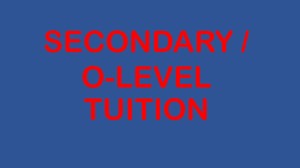I wanted to proceed to Current Electricity, but the students wanted more discussion on how to answer application questions on electrostatics.
So I supplied them with quite a number of such application questions, often with confusing diagrams. The key to answering such questions is to first draw the distribution of charges on the items in the diagram, and identify which objects are conductors and which are non-conductors. For the conductors, check whether they are insulated from the surroundings.
Key points to note:
(1) Only non-conductors can be charged by rubbing (why?)
(2) Electrons can flow into and out of only conductors, and only when the conductors are in contact with other conductors (why?)
(3) A charged object can attract a neutral conductor (why?) and a charged object can also attract a neutral non-conductor (why?)
(4) Upon contact with a highly charged object, a conductor behaves differently from a non-conductor (why?)
Rgds,
Ilyasa, M.Ed, PGDE, ex-MOE Math and Physics teacher (hp: 97860411)
=============================================================
For our latest timetable, click here => 
=============================================================